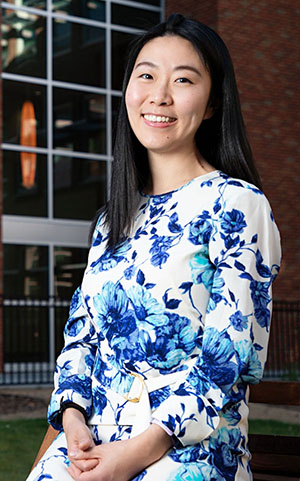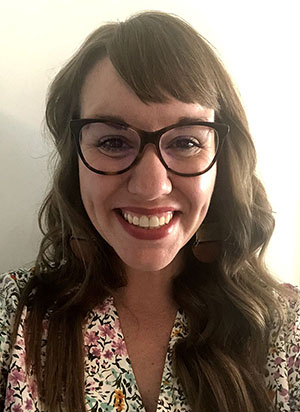Griz Chat: UM Education Professors Discuss COVID-19 Lessons Learned
MISSOULA – From canceled band concerts, to empty playgrounds, to classrooms shuttered indefinitely, this past year has upended the education system in ways not seen in generations.
Now, as schools across the country reopen in variations of normal, questions arise as to what lies ahead for the academic and social development of students – answers that may take years for educators to fully understand.
University of Montana faculty members Jingjing Sun and Allison Wilson from the Phyllis J. Washington College of Education have worked extensively in the field of child development and kept close watch on the events of the past year.

Sun, an assistant professor of educational psychology, studies the processes of learning and development, with a current focus on youth’s socioemotional development and school engagement, and specifically works with the Native American community in Montana.
Wilson, an assistant professor in early childhood education, has done extensive work looking at the impact of the pandemic on younger students and their families. In December, she wrote an article for the Center for Children, Families, and Workforce Development on supporting early interactions in an era of social distancing.
Sun and Wilson shared some of their thoughts about next steps for educators, students and parents.
UM News: Most public schools decided to switch to remote learning, or some form of it, a little under one year ago. As schools are opening and children prepare for the transition, what have we learned – or discovered – about students and remote learning this year?
Sun: We learned that teachers and students are so resilient. Look at the kids – they have no issue with wearing their masks for eight hours straight. They roll with it. Yes, we should worry about them, but over the long haul we must remember that every single grade has gone through this pandemic. Families, students and teachers are still going to have anxiety but it’s important to know we are not alone. We are going through this together.
Wilson: The first and most important thing we learned is how dynamic and amazing our teachers are and how they achieved what they were asked to do in such a short time. To get on the internet and see the creative Zoom backgrounds they developed and learn about how they’ve interacted and managed to engage 20 first graders or fifth graders on a Zoom call is incredible. Particularly when students are wanting to show you their dog or their favorite toy or their bedroom. Credit has to be given for their enthusiastic approach and coming out of this in such a positive way. All above and beyond what we could have even imagined of them.

UM News: We’ve heard a lot about potential learning loss for younger students, though some figures have recently shown gains in grade-level reading and math. Many parents are worried their children have fallen behind where they may be in a traditional school year. Are these pandemic learners worse-off, or, do you think over time, they’ll catch up no worse for wear?
Wilson: There is no specific way to answer this question because there are so many complicated variables that impact every single student, every single teacher, every single classroom, school district, and where they were before the pandemic. Before the COVID-19 pandemic our teachers had to be skilled in meeting students within the wide range of a typical developmental continuum. Not all 5-year-olds are at the same point just because they are 5. I feel confident teachers’ responsiveness to student differences will continue to be the case with young learners especially going into the fall.
UM News: The pandemic upended the way we view traditional K-12 education, and in many cases expanded the access and inclusion with remote options. Do you expect permanent changes in the traditional models of education based on the COVID-19 experience of remote learning? How might remote learning influence future classrooms?
Sun: In the long term, I don’t anticipate remote learning to become the new norm. What did come out of the pandemic was an even greater awareness that lots of communities and teachers are under-sourced. I hope that awareness and appreciation for this could continue.
Wilson: Because of my field, I am always thinking about developmentally appropriate practices, and I hope there is no intention of making kindergarten permanently remote. I am really hopeful, on the other hand, that some of the innovative and intentional ways that elementary teachers have worked to engage families will continue to be sustained. For example, teachers have created these absolutely amazing classroom websites that will exist beyond this year, and my hope is that once face-to-face teaching is back that teachers use those platforms to post videos or images in a secured space for families to see what is happening in classroom, along with opportunities for home engagement.
UM News: We know there are many working parents who struggled to balance professional demands with those of remote learning. For many families, this year has strained the parent-child relationship. What advice might you have for parents and teachers for a successful transition back to learning communities?
Sun: An open discussion with students on day one about their experience during the pandemic and continued daily check-in is critical because there may be still be some unresolved fear. “What if my friend has not come back” … what is implication of that? There are lots of questions teachers can ask or allow students to ask. All feelings are normal, there are no right or wrong ones, but sometimes students may have this perception that certain feelings are allowed while others are dismissed. It is important that families and teachers work together to structure an environment where students can feel safe and comfortable to share about their fear, anxiety and grief, while also celebrating the success they had during the pandemic. Activities that allow such conversations or creative art could be a great way to rebuild relationships and trust.
Last fall, one thing I suggested to teachers in the Arlee Elementary School is setting up classroom norms, or collective principles, with students – like help each other, respect each other, value the time together. Let it be a classroom activity. Of course, the teacher is going to facilitate the activity, but the more ownership students take, the more they can help set expectations that they’re willing to be held accountable, and they do so by allowing families to be part of the conversation. It truly takes a village – schools and communities and families – all united to support children.
UM News: The challenges of this year presented increased rates of mental health challenges for children, particularly for students in low-income and minority demographics. How might teachers, parents and communities be mindful and supportive?
Sun: Even though these issues existed long before COVID-19, the pandemic really made schools much more aware of the importance of students’ mental health, and ways that social emotional learning may support students’ well-being.
School counselors can be a big resource not just for kids struggling but even as a preventative measure to provide more universal care and instruction for students. They can be great resources for teachers as well, who are also at the frontline of social and emotional learning. And universities like UM can support this effort. For example, my colleagues at the Department of Teaching and Learning have been providing more support to teachers and schools. We also have excellent programs in Counselor Education and School Psychology here that can support local schools.
Even though the pandemic seems to be coming to an end, I hope the resolution and the creativity in finding solutions to address this issue will continue. Supporting youth’s mental health is as critical as their academic success in schools.
UM News: This year, remote learning elevated the realities of disparity and equitable access to technology for all families. How does having access to technology, WIFI and the time and training to deliver remote learning speak to equity in school communities?
Wilson: The answer is in the question itself. It has always existed but the move to remote just shone an even brighter light on it.
Sun: And, by exposing it we present a great opportunity to look at how we address such an inequity. More stable internet and WIFI, yes, but it’s not just software and hardware. It’s training the people who use the technology and addressing how they employ it to amplify learning. So, the need for us as teacher educators is to help teachers critically examine and understand how to integrate tech into teaching and use it well.
Wilson: The other piece, too, is family engagement. This spotlight on inequities and access to electronics and the internet gave a brighter insight into what teachers can expect from families – including access and familiarity with technology, and even the opportunity to stay connected and respond. Many teachers sent things home through newsletters or via email only. I hope this experience will shine a light on ways to be innovative to make sure families have equitable access to knowledge of what’s happening in classrooms.
Even if we knew for sure that something like this pandemic is never going to happen again, I hope we don’t forget things that we’ve learned from this experience that can benefit our back-to-normal school experience.
###
Contact: Jingjing Sun, assistant professor of educational psychology, UM College of Education, 406-243-4285, jingjing.sun@umontana.edu; Allison Wilson, assistant professor in early childhood education, UM College of Education, 406-243-4864, allison.wilson@mso.umt.edu.